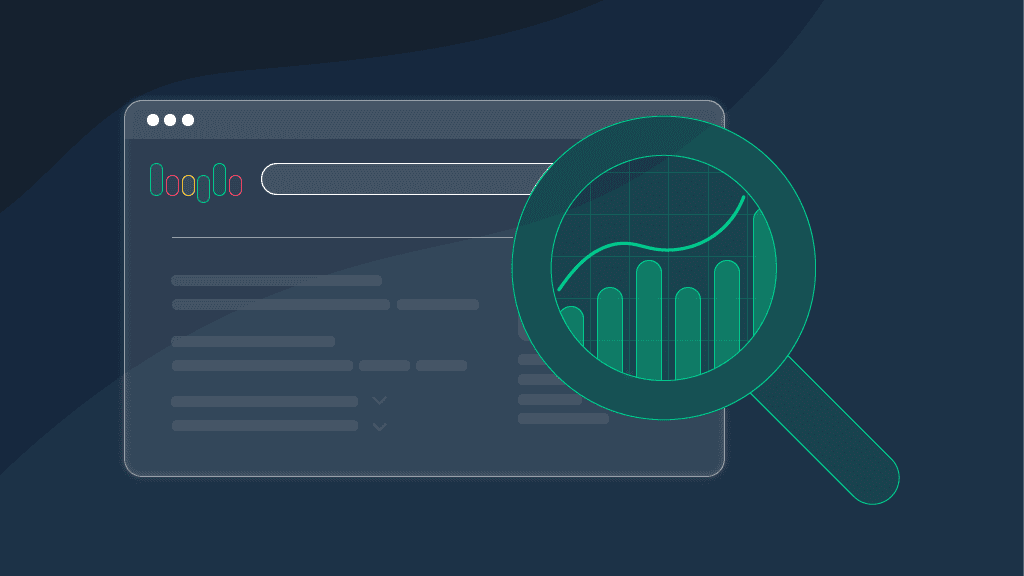What Is SERP Analysis And How To Do It?
Every day, millions of people turn to search engines to find solutions to their problems and answer their questions. From “How to bake cookies” to “beautiful prom dresses,” this beast tamed inside the name of Google has answers to all of the queries you could enter. With Google being the most popular search engine, SEO gurus focus heavily on ranking high there – rightfully so.
However, keyword research is no longer just finding a popular search query and stuffing your content with it. You must also do a thorough SERP analysis to boost your organic traffic, plus a little bit more.
Ready to open Pandora's box of SERP analysis? In this blog post, we’ll help you discover why it’s essential for your SEO strategy.
What is SERP analysis?
First things first, let’s find out what the SERP abbreviation stands for. SERP is short for Search Engine Results Page. It’s the page that a search engine returns after you submit a query. SERP contains organic results, paid ads, and other specific features like Knowledge Panels and People Also Ask boxes.
With that said, SERP analysis is a process of delving deep into search engine result pages and reviewing the top-ranking websites for specific keywords. As complicated as it might sound, SERP analysis's purpose is to uncover how these pages got to the highest positions and see if you can conquer them. Moreover, the analysis includes testing SERP features to ensure you use relevant keywords for your niche.
How do you conduct SERP analysis?
Now let’s go through each step of how to conduct it. But don’t worry – we always translate complex things into something easy to digest.
1. Doing keyword research
There are two parts to keyword research: assessing your content and tracking keywords related to your industry.
The first step of keyword research is understanding your target queries and their current rankings. The easiest way to do this is by copy-pasting them into a spreadsheet. Having all the keywords and their search rankings compiled together will help you keep a pulse on what’s working and what’s not.
For the second part of keyword research, list keywords you’re not chasing yet but want to rank for. But remember that it’s not only the competitor keywords you want to explore – check out keywords ranking high in your industry. They’ll help you capture those visitors who are more likely to convert.
Analyzing your direct competitors’ content is valuable, but don’t stop there. Take a step back to understand what’s going on in the entire industry – it’s an easy way to find related keywords you could address.
Finally, since Google differentiates search results according to your area, you should track keywords that refer to your company name and the location it’s based in. If your business operates in different areas, you can hop around them with residential or datacenter proxies to get even more accurate results.
2. Identifying user intent
The second step in SERP analysis is to understand each keyword's search intent and ensure it aligns with your topic. Simply put, determine what the user wants.
When looking at a keyword, ask yourself, “What information a peep using that keyword is trying to find?” Once you’ve sorted those things, you can adjust your content to answer those questions and boost your SEO game.
Say you’re targeting the “Google Sheets tutorial” keyword. Before preparing the content, you should consider whether your target audience is looking for a beginner or advanced guide.
3. Performing competitive analysis
As we already mentioned, if you decide to analyze search results, it’s essential to examine your competitors’ content and evaluate how hard it would be to outperform them. But what exactly should you be lookin’?
First, check if internet giants like Wikipedia, Quora, or an industry-leading product (i.e., Salesforce or HubSpot) haven’t taken over the entire SERP for your keyword of interest. If they have, you may want to skip the keyword; otherwise, it will be challenging to outrank them. Then, see if you can find a unique angle your competitors haven’t touched yet. If you do find one, make sure to mix it into your article.
Finally, analyze the best-performing piece in the SERP and see if there’s any way to improve it, like sharing your insights, aka giving the expert’s take.
How to get SERP data?
Now, there are three ways you can get Google search data. Remember, Google differentiates search results according to your physical location. So you might want to swap between different places to get the complete picture. Luckily, you can do it in just a few clicks with our residential proxies – they cover 195+ locations worldwide, including cities and US states.
Or you can use a keyword research tool. While the most obvious choices, like Ahrefs or Moz, come to mind, there’re other less-popular alternatives.
SERP analysis tools should provide rich results (Google Ads, answer boxes, knowledge panels, featured snippets, etc.) – chances are, they’re the reason behind a well-performing content piece.
Finally, you can get an automated scraping tool – like Google Search API – that will deliver real-time search engine results in a structured JSON or raw HTML format. Using an automated scraping tool will free your hands – we’ll take care of proxy management, scraping, parsing, and deliver results at a 100% success rate. And you’ll be able to do more interesting tasks than copying and pasting meta titles to the Sheets.
4. Finding ranking opportunities
One of the ways you can find said opportunities is by discovering keywords your competitors aren’t ranking for and utilizing them in your content.
You can also dive deeper into the long-tail keywords. They will likely be less competitive. Also, they might be the exact match to what people enter into search engines, ‘cuz let’s be honest – we all sometimes copy the full error code we receive in one app or another and paste it into the Google search.
5. Optimizing already existing content
The last step in your SERP analysis journey is keeping an eye on content trends and best practices. Such a routine will make you stay ahead of the competition.
Regular SEO audits and content updates can help you rank higher in search results. Aim to perform SEO audits at least once a quarter – this way, you’ll be able to find weak spots early.
Why is SERP analysis beneficial?
Regular keyword research is just scratching the surface of the SEO world. Although it’s vital to consider basic information like search frequency, a thorough SERP analysis helps you uncover deeper insights and take SEO efforts to the next level.
It includes generating new ideas and adjusting them to your content and later leads to boosting organic traffic, getting more leads, and increasing sales thanks to top-notch SEO performance.
Bottom line
SEO can get you in front of the target audience, and SERP analysis is the key to taking your SEO game to the next level. It gives you the inside scoop on why top-ranking websites are killing it and shows you where there's room for improvement in your strategy.
And although Google algorithms and updates might cause headaches, don’t forget that we’re always on your side, whether you need high-quality proxies or top-notch SERP Scraping API. Besides, you can test Smartproxy’s API for three days and see if it’s your match.
This article was originally published by Sydney Vallée on the SERPMaster blog.
About the author

James Keenan
Senior content writer
The automation and anonymity evangelist at Smartproxy. He believes in data freedom and everyone’s right to become a self-starter. James is here to share knowledge and help you succeed with residential proxies.
All information on Smartproxy Blog is provided on an "as is" basis and for informational purposes only. We make no representation and disclaim all liability with respect to your use of any information contained on Smartproxy Blog or any third-party websites that may be linked therein.





